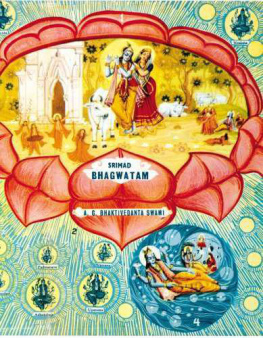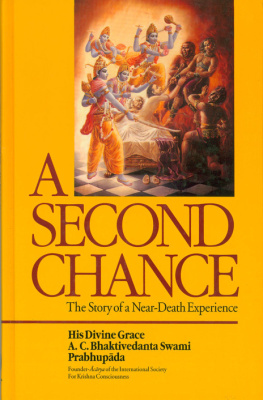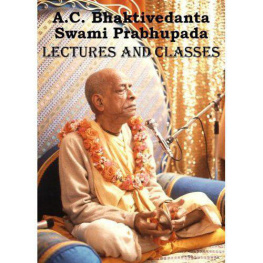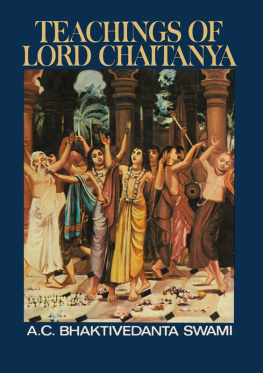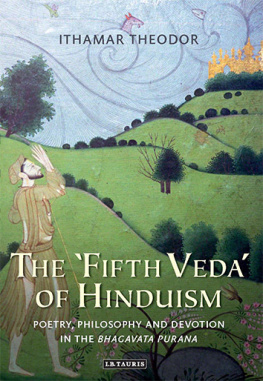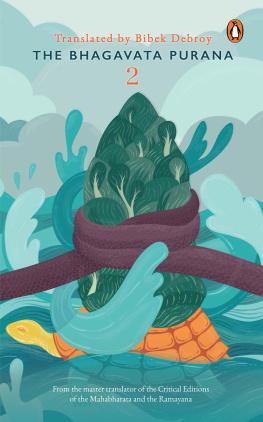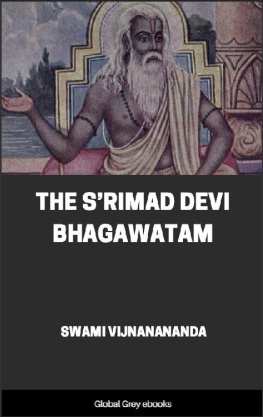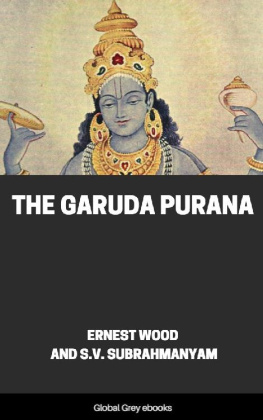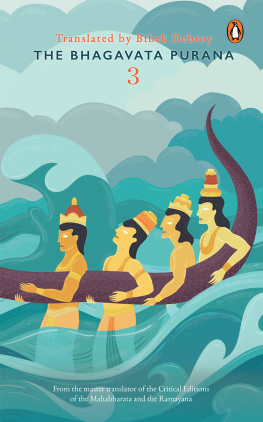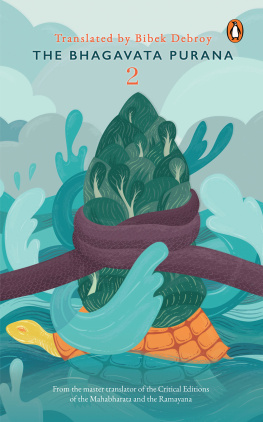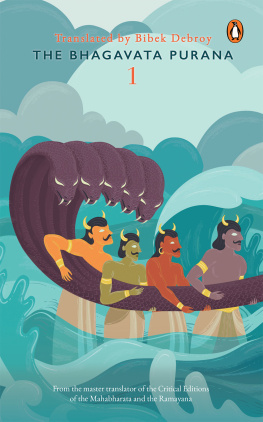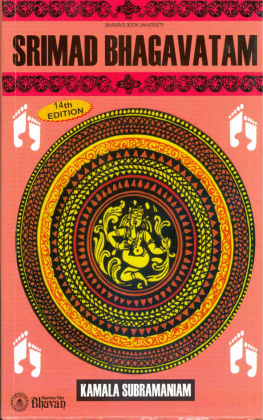rmad-Bhgavatam
Canto 1:"Creation"
Canto 1 - "Creation"
SB: Preface
Preface
We must know the present need of human society. And what is that need? Human society is no longer bounded by geographical limits to particular countries or communities. Human society is broader than in the Middle Ages, and the world tendency is toward one state or one human society. The ideals of spiritual communism, according to rmad-Bhgavatam, are based more or less on the oneness of the entire human society, nay, of the entire energy of living beings. The need is felt by great thinkers to make this a successful ideology. rmad-Bhgavatam will fill this need in human society. It begins, therefore, with the aphorism of Vednta philosophy janmdy asya yata [SB 1.1.1] to establish the ideal of a common cause.
Human society, at the present moment, is not in the darkness of oblivion. It has made rapid progress in the field of material comforts, education and economic development throughout the entire world. But there is a pinprick somewhere in the social body at large, and therefore there are large-scale quarrels, even over less important issues. There is need of a clue as to how humanity can become one in peace, friendship and prosperity with a common cause. rmad-Bhgavatam will fill this need, for it is a cultural presentation for the re-spiritualization of the entire human society.
rmad-Bhgavatam should be introduced also in the schools and colleges, for it is recommended by the great student-devotee Prahlda Mahrja in order to change the demoniac face of society.
kaumra caret prjo
dharmn bhgavatn iha
durlabha mnua janma
tad apy adhruvam arthadam
( SB 7.6.1)
Disparity in human society is due to lack of principles in a godless civilization. There is God, or the Almighty One, from whom everything emanates, by whom everything is maintained and in whom everything is merged to rest. Material science has tried to find the ultimate source of creation very insufficiently, but it is a fact that there is one ultimate source of everything that be. This ultimate source is explained rationally and authoritatively in the beautiful Bhgavatam, or rmad-Bhgavatam.
rmad-Bhgavatam is the transcendental science not only for knowing the ultimate source of everything but also for knowing our relation with Him and our duty toward perfection of the human society on the basis of this perfect knowledge. It is powerful reading matter in the Sanskrit language, and it is now rendered into English elaborately so that simply by a careful reading one will know God perfectly well, so much so that the reader will be sufficiently educated to defend himself from the onslaught of atheists. Over and above this, the reader will be able to convert others to accepting God as a concrete principle.
rmad-Bhgavatam begins with the definition of the ultimate source. It is a bona fide commentary on the Vednta-stra by the same author, rla Vysadeva, and gradually it develops into nine cantos up to the highest state of God realization. The only qualification one needs to study this great book of transcendental knowledge is to proceed step by step cautiously and not jump forward haphazardly like with an ordinary book. It should be gone through chapter by chapter, one after another. The reading matter is so arranged with its original Sanskrit text, its English transliteration, synonyms, translation and purports so that one is sure to become a God-realized soul at the end of finishing the first nine cantos.
The Tenth Canto is distinct from the first nine cantos because it deals directly with the transcendental activities of the Personality of Godhead r Ka. One will be unable to capture the effects of the Tenth Canto without going through the first nine cantos. The book is complete in twelve cantos, each independent, but it is good for all to read them in small installments one after another.
I must admit my frailties in presenting rmad-Bhgavatam, but still I am hopeful of its good reception by the thinkers and leaders of society on the strength of the following statement of rmad-Bhgavatam (1.5.11):
tad-vg-visargo janatgha-viplavo
yasmin prati-lokam abaddhavaty api
nmny anantasya yao 'kitni yac
chvanti gyanti ganti sdhava
"On the other hand, that literature which is full with descriptions of the transcendental glories of the name, fame, form and pastimes of the unlimited Supreme Lord is a transcendental creation meant to bring about a revolution in the impious life of a misdirected civilization. Such transcendental literatures, even though irregularly composed, are heard, sung and accepted by purified men who are thoroughly honest."
O tat sat
A.C. Bhaktivedanta Swami
Dated at Delhi
December 15, 1962
SB Introduction
SB Introduction
Introduction
The conception of God and the conception of Absolute Truth are not on the same level. The rmad-Bhgavatam hits on the target of the Absolute Truth. The conception of God indicates the controller, whereas the conception of the Absolute Truth indicates the summum bonum or the ultimate source of all energies. There is no difference of opinion about the personal feature of God as the controller because a controller cannot be impersonal. Of course modern government, especially democratic government, is impersonal to some extent, but ultimately the chief executive head is a person, and the impersonal feature of government is subordinate to the personal feature. So without a doubt whenever we refer to control over others we must admit the existence of a personal feature. Because there are different controllers for different managerial positions, there may be many small gods. According to the Bhagavad-gt any controller who has some specific extraordinary power is called a vibhtimat sattva, or controller empowered by the Lord. There are many vibhtimat sattvas, controllers or gods with various specific powers, but the Absolute Truth is one without a second. This rmad-Bhgavatam designates the Absolute Truth or the summum bonum as the para satyam.
The author of rmad-Bhgavatam, rla Vysadeva, first offers his respectful obeisances unto the para satyam (Absolute Truth), and because the para satyam is the ultimate source of all energies, the para satyam is the Supreme Person. The gods or the controllers are undoubtedly persons, but the para satyam from whom the gods derive powers of control is the Supreme Person. The Sanskrit word vara (controller) conveys the import of God, but the Supreme Person is called the paramevara, or the supreme vara. The Supreme Person, or paramevara, is the supreme conscious personality, and because He does not derive any power from any other source, He is supremely independent. In the Vedic literatures Brahm is described as the supreme god or the head of all other gods like Indra, Candra and Varua, but the rmad-Bhgavatam confirms that even Brahm is not independent as far as his power and knowledge are concerned. He received knowledge in the form of the Vedas from the Supreme Person who resides within the heart of every living being. That Supreme Personality knows everything directly and indirectly. Individual infinitesimal persons, who are parts and parcels of the Supreme Personality, may know directly and indirectly everything about their bodies or external features, but the Supreme Personality knows everything about both His external and internal features.
The words janmdy asya [SB 1.1.1] suggest that the source of all production, maintenance or destruction is the same supreme conscious person. Even in our present experience we can know that nothing is generated from inert matter, but inert matter can be generated from the living entity. For instance, by contact with the living entity, the material body develops into a working machine. Men with a poor fund of knowledge mistake the bodily machinery to be the living being, but the fact is that the living being is the basis of the bodily machine. The bodily machine is useless as soon as the living spark is away from it. Similarly, the original source of all material energy is the Supreme Person. This fact is expressed in all the Vedic literatures, and all the exponents of spiritual science have accepted this truth. The living force is called Brahman, and one of the greatest cryas (teachers), namely rpda akarcrya, has preached that Brahman is substance whereas the cosmic world is category. The original source of all energies is the living force, and He is logically accepted as the Supreme Person. He is therefore conscious of everything past, present and future, and also of each and every corner of His manifestations, both material and spiritual. An imperfect living being does not even know what is happening within his own personal body. He eats his food but does not know how this food is transformed into energy or how it sustains his body. When a living being is perfect, he is aware of everything that happens, and since the Supreme Person is all-perfect, it is quite natural that He knows everything in all detail. Consequently the perfect personality is addressed in the rmad-Bhgavatam as Vsudeva, or one who lives everywhere in full consciousness and in full possession of His complete energy. All of this is clearly explained in the rmad-Bhgavatam, and the reader has ample opportunity to study this critically.

